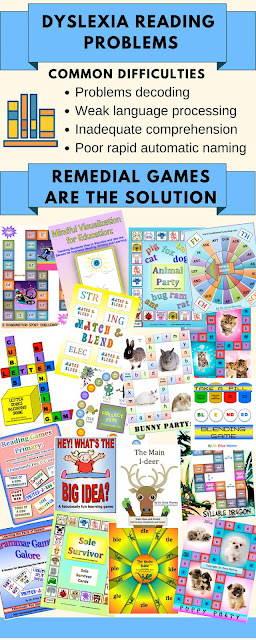The Different Types of Dyslexia: Targeting Intervention
Posted by Erica Warren on


What are the different types of dyslexia?
- Dyseidetic Dyslexia, or Visual Dyslexia, is when a learner struggles with the decoding and or spelling of words because he or she has great difficulty remembering or revisualizing the word, particularly irregular sight words (also known as eidetic words). These learners tend to have good auditory processing skills as well as an understanding of phonics, but they struggle with visual processing, memory synthesis, and the sequencing of words. Word or letter reversals when reading, as well as writing and spelling difficulties, are also common.
- Dysphonetic Dyslexia, or Auditory Dyslexia, is when a learner struggles with the decoding and or spelling of words because he or she has great difficulty associating sounds with symbols (also known as phonemic awareness). These learners tend to have good visual processing skills, but they have deficits in auditory processing as well as linking a sound to a visual cue.
- Dysphoneidetic or Mixed Dyslexia is when a learner struggles with both visual and auditory processing deficits. This subcategory is known as Mixed Dyslexia or Dysphoneidetic Dyslexia.
What about the Other Cognitive Struggles that Are Often Associated with Dyslexia?
Although the above designations are somewhat helpful, they do not address all the areas that can be associated with dyslexia, such as difficulties with handwriting, oral language, math, motor planning and coordination, organization, orientation to time, focus and attention, spatial perception, and eye movement control.
- Syndrome I: Language Disorder - These learners experience anomia, comprehension deficits, and confusion with speech and sound discrimination.
- Syndrome II: Articulatory and Graphomotor Discoordination - These learners exhibit gross and fine motor coordination deficits, as well as poor speech and graphomotor coordination.
- Syndrome III: Visuospatial Perceptual Disorder - These learners have poor visuospatial perception and difficulties encoding and retrieving visual stimuli.
But What About Those That Learn to Compensate for Dyslexia?
How Can The Core Skills that Cause Dyslexia Be Remediated?
At Good Sensory Learning, we offer a number of publications that serve the needs of dyslexic learners with auditory deficits. Auditory Processing Games for Online or in-person Learning and Reversing Reversals Primary offers activities that exercise core auditory processing skills, and our Following Directions activities address listening skills, as well as language processing. We also offer a series of reading and board games that support remedial reading programs and exercise both auditory discrimination and synthesis. In addition, we offer resources for those who need to strengthen their visual processing skills in the areas of reasoning, tracking, discrimination, directionality, synthesis, figure-ground, closure, motor, and spatial skills. In addition, those with a double deficit can benefit from our reading games as well as MPower, a publication that exercises rapid automatic naming and organizational skills. Furthermore, one should consider developing visualization skills for all learners with dyslexia, as this improves working memory as well as long-term memory.
Cheers, Dr. Erica Warren
- Blog: https://goodsensorylearning.com/blogs/news
- YouTube Channel: https://www.youtube.com/user/warrenerica1
- Executive Function Podcast: https://goodsensorylearning.com/pages/the-personal-brain-trainer-podcast-with-dr-erica-warren
- Store: http://www.Goodsensorylearning.com/
- Courses: http://www.learningspecialistcourses.com/
- Newsletter Sign-up: https://good-sensory-learning.kit.com/drericawarren


